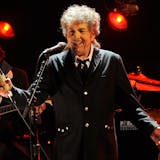Drive-thru options for snagging a late-night Big Mac or Nachos Bell Grande in St. Paul may soon be limited.
On Friday, the St. Paul Planning Commission is scheduled to discuss a recommendation to Mayor Melvin Carter and the City Council that could potentially lead to a ban on new fast food and coffee shop drive-thrus, an effort to improve pedestrian friendliness, safety and other livability issues.
The proposal comes five years after a similar prohibition on new fast food drive-thrus was adopted in Minneapolis.
If the St. Paul changes are ultimately approved, the Minneapolis-St. Paul area could be the first major metropolis, not including its suburbs, to fully outlaw newly built fast food and coffee drive-thrus.
There have been other bans in smaller cities like Annapolis, Md., and San Luis Obispo, Calif., as well as a growing number of drive-thru restrictions in certain areas of major cities like Seattle, Portland, Los Angeles and Atlanta.
Advocates and St. Paul city planning staff say eateries with drive-thru windows can result in long lines of cars that add to congestion and pollution. But local fast food operators and business groups argue the restrictions would limit options for customers and push business out of St. Paul.
Tim Stoddard, 45, of Farmington, uses the drive-thru at Taco Bell on Snelling Avenue north of University Avenue most weekdays during his lunch break.
“I got to get back to work,” Stoddard said, as he scarfed down a soft taco in his car. “I don’t got time to sit inside.”



